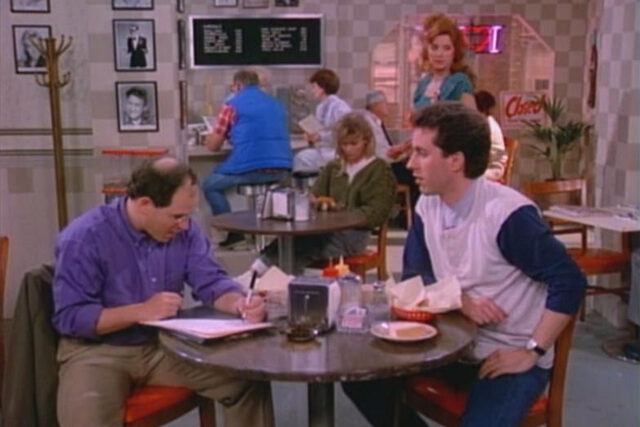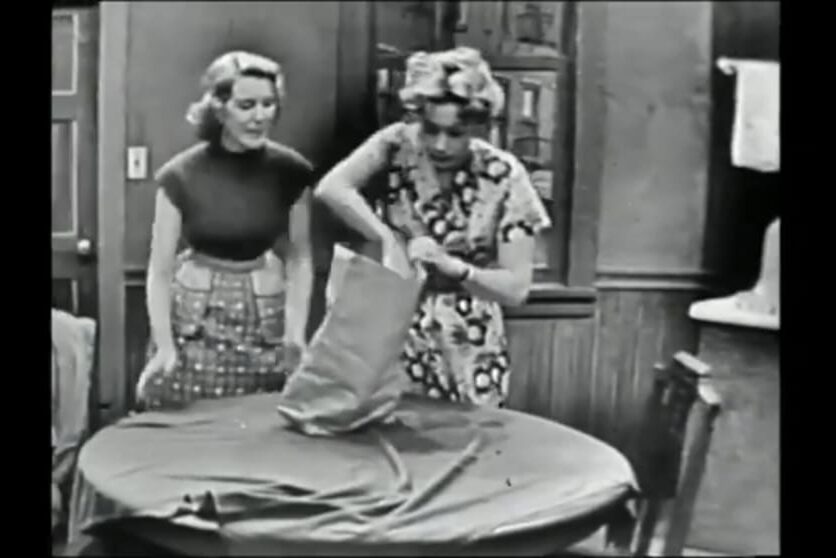1. Seinfeld’s Elaine-Free Start Left Viewers Cold

The original pilot for Seinfeld, then called The Seinfeld Chronicles, lacked punch and Elaine. Test audiences were confused, calling it slow and “about nothing.” The chemistry felt incomplete, and NBC nearly dropped it. It wasn’t until Julia Louis-Dreyfus joined that things clicked. Her addition balanced out the all-male cast and brought much-needed energy. “The pilot didn’t work, but we saw potential,” one exec later admitted. Seinfeld himself said it best: “The pilot didn’t look like the show we ended up making.” Thankfully, NBC gave them another shot and the rest is comedy gold.
2. Friends Wasn’t Friendly Enough at First

The Friends pilot didn’t exactly charm audiences. Early focus groups called the characters “cold” and questioned the lack of chemistry. Viewers just didn’t buy the group as genuine friends. The jokes were there, but the warmth was missing. Monica was called too brash, and Ross too sad. Writers and producers quickly reshaped interactions and built a softer rhythm between the cast. “We had to find the heart,” a producer recalled. Once that clicked, audiences found the show irresistible. Turns out, a little emotional connection can turn a good sitcom into a generational favorite.
3. I Love Lucy Only Got Made Because Lucy Believed

Lucille Ball’s pitch for I Love Lucy got a hard no from CBS. They doubted Americans would relate to her real-life marriage with Desi Arnaz. Instead of backing down, she and Desi funded their own pilot to prove it could work. That gamble paid off. “We had to show them,” Lucy said later. The self-funded pilot changed everything. It became the prototype for multi-camera sitcoms and live audiences. The couple’s natural chemistry convinced CBS and millions of viewers. Sometimes, belief in your own story is the only greenlight you need.
4. The Honeymooners Had a Rough Transition to Sitcom

The Honeymooners didn’t begin as a full show. It was a sketch. When Jackie Gleason expanded it into a sitcom, the format shift puzzled execs. They weren’t sure a yelling bus driver and his wife could anchor a whole show. Early versions lacked balance, and the pacing dragged. But Gleason fought to keep the blue-collar grit. “I knew what this show could be,” he later said. Slowly, with tweaks to tone and timing, it won over the network. Today, it’s hailed as a sitcom classic only because Gleason refused to water it down.
5. Game of Thrones Was a Total Trainwreck at First

The first Game of Thrones pilot was, in co-creator David Benioff’s words, “a disaster.” HBO hated it. Key plot points were unclear, and characters felt flat. Viewers didn’t even realize Jaime and Cersei were siblings. Emilia Clarke hadn’t been cast yet. Her replacement lacked spark. Almost 90 percent was reshot. Producers also reworked the script to tighten relationships and clarify the stakes. “We had to go back to the basics,” Benioff said. That second shot launched one of the biggest shows ever. It’s proof that even messy beginnings can lead to jaw-dropping finales.
6. The Big Bang Theory’s First Lead Just Didn’t Work

The original Big Bang Theory pilot felt like a completely different show. The humor was harsher, the tone mean-spirited, and Penny didn’t exist. Instead, a character named Katie made the guys seem pitiful. Test audiences hated it. “They felt uncomfortable,” one producer recalled. CBS pulled the plug. But creators Chuck Lorre and Bill Prady retooled it, brought in Kaley Cuoco, and softened the male leads. The second pilot was lighter, warmer, and far more relatable. That version won CBS over and the rest of us too. Sometimes, it takes two tries to find the funny.
7. The Office (U.S.) Looked Like a Pale Copy

The American version of The Office struggled to find its voice. Its pilot mirrored the UK original almost word for word, and it didn’t land. Critics slammed it as lifeless. “A weaker imitation,” wrote one review. Steve Carell played Michael Scott as more bitter than awkward. Thankfully, the writers quickly shifted gears. By softening Michael and writing more emotionally nuanced characters, they found a tone that felt distinctly American. Viewers warmed up slowly. “We had to grow into our own skin,” said one cast member. Eventually, they did with paper, pranks, and plenty of heart.
8. Parks and Recreation’s Leslie Knope Was Too Cringe

In Parks and Recreation’s original pilot, Leslie Knope felt more like a watered-down Michael Scott than a true original. Test audiences weren’t impressed. She came across as awkward and aimless rather than determined and optimistic. Critics called the pilot “off-putting.” But the writers knew Leslie had potential. They refined her character into someone earnest and capable without losing her quirky edge. “We wanted her to be lovable and driven,” said co-creator Mike Schur. Once they found that sweet spot, the entire show blossomed. Sometimes it’s not the concept. It’s just how you frame the heart behind it.
9. All in the Family Failed Twice Before It Worked

Before All in the Family made history, it failed. Twice. CBS rejected its first two pilots, which featured different actors and even different titles. Archie Bunker’s politically incorrect rants made execs nervous. But Norman Lear refused to water it down. He kept refining until the right balance of humor and tension was struck. “We knew it was risky,” Lear later said. Still, when the third pilot aired, audiences saw something real. Archie was offensive, but human. That nuance made the show revolutionary. It’s a reminder that sometimes, rejection is just rehearsal for something iconic.
10. Cheers Tested as One of NBC’s Worst

Believe it or not, Cheers tested terribly. One of NBC’s lowest-rated pilots ever, viewers just didn’t connect. “Too slow. Too talky,” one tester noted. But executives saw potential in the writing and held firm. Slowly, the show built an audience. The characters developed depth. The humor got sharper. And that Boston bar began to feel like home. Cheers eventually became an Emmy magnet and pop culture staple. As co-creator Glen Charles said, “We weren’t slick, but we had heart.” Proof that first impressions aren’t everything, especially when what you’re building is something timeless.
11. The Mary Tyler Moore Show Was ‘Too Independent’ for Viewers

When The Mary Tyler Moore Show debuted, audiences weren’t ready. A 30-something woman starting over in a new job, unmarried and confident, was too progressive. “She’s too independent,” test groups said. Producers tweaked the tone slightly to show more of Mary’s vulnerability but didn’t change her core. The payoff was a series that redefined women in television. “We didn’t want her to apologize for being single,” said creator James L. Brooks. It became a groundbreaking hit. And in its quiet strength, it reminded everyone that being different is often the start of something great.
This story 11 Pilot Episodes So Bad They Almost Killed the Show was first published on Daily FETCH


